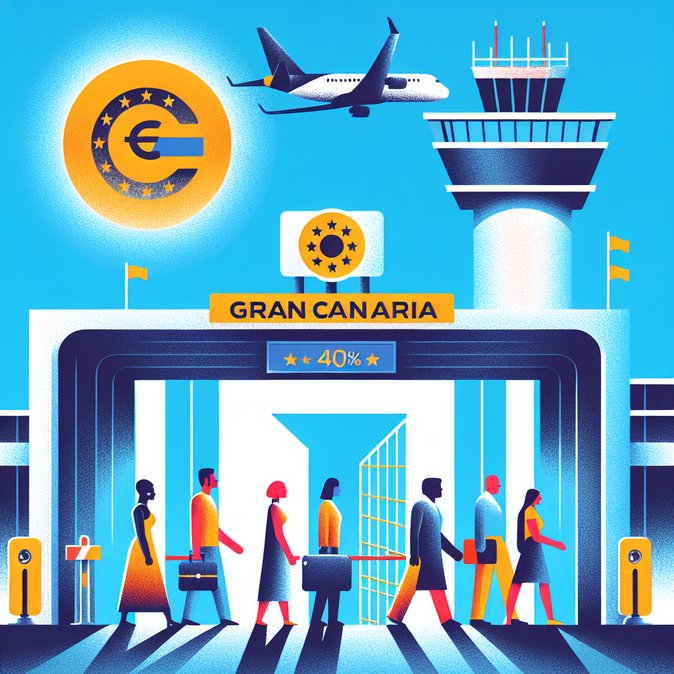
The Canary Islands took a major digital-border leap on 29 October when Gran Canaria Airport officially inaugurated Spain’s first fully-operational Entry/Exit System (EES) smart gates. Jesús María Gómez Martín, the archipelago’s chief of police, cut the ribbon at Terminal 1, flanked by officials from the EU agency eu-LISA and airport operator Aena.
Dozens of e-gates now record the facial image and four fingerprints of every non-EU short-stay traveller and automatically calculate permitted days in the Schengen Area. The installation is part of an €83 million national programme to retrofit all Spanish external border points ahead of the EU-wide deadline. The Canary Islands—Spain’s southernmost frontier and a major hub for flights from Africa and the Americas—were chosen as a pilot because the airport already processes more than 1.3 million third-country arrivals annually.
Officials say early data show average border-queue times fell from 18 to 11 minutes during a soft-launch earlier this month. Airlines operating long-haul services, especially to Latin America, welcomed the change, noting that faster connections improve on-time performance and reduce missed onward flights in Madrid and Barcelona.
For corporate mobility managers, the new gates require travellers to remove hats and glasses and place index fingers on a scanner; those unwilling or unable can still opt for a staffed desk, albeit with longer waits. Companies relocating staff to the Canary Islands’ growing tech-outsourcing sector should update arrival briefings and encourage enrolment in Spain’s Pass-Automático programme, which links frequent-traveller passports to the biometric kiosks for even faster clearance.
Gran Canaria’s rollout will be followed by Tenerife Sur in December and Palma de Mallorca in mid-November. National Police technicians say lessons learned in the Canaries—particularly around cruise-ship peaks—will feed into procedures for mainland airports before Spain’s nationwide EES go-live in early February.
Dozens of e-gates now record the facial image and four fingerprints of every non-EU short-stay traveller and automatically calculate permitted days in the Schengen Area. The installation is part of an €83 million national programme to retrofit all Spanish external border points ahead of the EU-wide deadline. The Canary Islands—Spain’s southernmost frontier and a major hub for flights from Africa and the Americas—were chosen as a pilot because the airport already processes more than 1.3 million third-country arrivals annually.
Officials say early data show average border-queue times fell from 18 to 11 minutes during a soft-launch earlier this month. Airlines operating long-haul services, especially to Latin America, welcomed the change, noting that faster connections improve on-time performance and reduce missed onward flights in Madrid and Barcelona.
For corporate mobility managers, the new gates require travellers to remove hats and glasses and place index fingers on a scanner; those unwilling or unable can still opt for a staffed desk, albeit with longer waits. Companies relocating staff to the Canary Islands’ growing tech-outsourcing sector should update arrival briefings and encourage enrolment in Spain’s Pass-Automático programme, which links frequent-traveller passports to the biometric kiosks for even faster clearance.
Gran Canaria’s rollout will be followed by Tenerife Sur in December and Palma de Mallorca in mid-November. National Police technicians say lessons learned in the Canaries—particularly around cruise-ship peaks—will feed into procedures for mainland airports before Spain’s nationwide EES go-live in early February.







